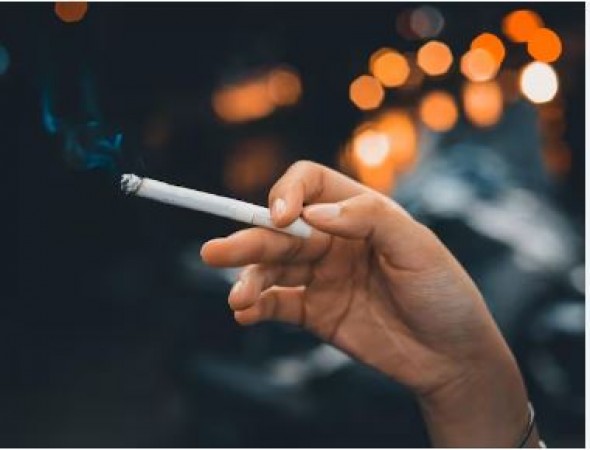Passive smoking, also known as secondhand smoke (SHS) or environmental tobacco smoke (ETS), refers to the involuntary inhalation of smoke by non-smokers who are near active smokers. It's like having a front-row seat to someone else's smoking habit without wanting a ticket.
Types of Secondhand Smoke
There are two types of secondhand smoke:
- Mainstream Smoke: The smoke exhaled by a smoker.
- Sidestream Smoke: The smoke that comes from the burning end of a cigarette, cigar, or pipe. Sidestream smoke is more dangerous because it contains higher concentrations of harmful substances.
Composition of Secondhand Smoke
Secondhand smoke is a toxic cocktail of over 7,000 chemicals, many of which are harmful. At least 70 of these chemicals are known to cause cancer. Among these are:
- Nicotine: The addictive substance in tobacco.
- Carbon Monoxide: Reduces the amount of oxygen in the blood.
- Formaldehyde: Used to preserve dead bodies.
- Ammonia: Found in household cleaners.
Health Risks of Passive Smoking
Exposure to secondhand smoke can have severe health consequences. Let's break it down by who is at risk:
Risks to Adults
-
Cardiovascular Diseases
- Heart Disease: SHS increases the risk of heart disease by 25-30%.
- Stroke: Risk of stroke goes up by 20-30% with prolonged exposure.
-
Respiratory Problems
- Lung Cancer: Non-smokers exposed to SHS have a 20-30% higher risk of developing lung cancer.
- Chronic Obstructive Pulmonary Disease (COPD): SHS can exacerbate COPD symptoms.
-
Other Health Issues
- Asthma: Can trigger asthma attacks and worsen symptoms.
- Diabetes: Some studies suggest a link between SHS and the development of type 2 diabetes.
Risks to Children
Children are especially vulnerable to the effects of SHS due to their developing bodies.
-
Infant Health
- Sudden Infant Death Syndrome (SIDS): SHS is a significant risk factor for SIDS.
- Low Birth Weight: Pregnant women exposed to SHS are more likely to have babies with low birth weight.
-
Childhood Health Issues
- Respiratory Infections: Increased risk of bronchitis and pneumonia.
- Asthma: Higher likelihood of developing asthma and experiencing severe attacks.
- Ear Infections: Greater risk of middle ear infections, leading to potential hearing problems.
Risks to Pregnant Women
Pregnant women exposed to SHS can face numerous complications, including:
- Preterm Birth: Increased risk of giving birth prematurely.
- Developmental Issues: Greater chance of developmental problems in the unborn baby.
How to Protect Yourself from Passive Smoking
Understanding the risks is the first step. Here are practical ways to protect yourself and your loved ones from the dangers of passive smoking.
Creating a Smoke-Free Environment
-
No Smoking Indoors
- Home: Make your home a no-smoking zone.
- Car: Never allow smoking in your car. Even with windows open, the smoke lingers.
-
Public Places
- Workplaces: Advocate for smoke-free workplaces.
- Restaurants and Bars: Choose smoke-free establishments.
Avoiding Secondhand Smoke
-
Social Gatherings
- Outdoor Venues: Prefer outdoor venues where smoke can disperse.
- Non-Smoking Sections: Opt for non-smoking areas in public places.
-
Travel Considerations
- Hotels: Book non-smoking rooms.
- Transportation: Use smoke-free modes of transport.
Educating Others
-
Family and Friends
- Spread Awareness: Talk about the dangers of passive smoking.
- Support Smokers: Encourage friends and family members who smoke to quit.
-
Community Involvement
- Public Campaigns: Participate in or support public health campaigns promoting smoke-free environments.
- Local Policies: Advocate for stricter smoking regulations in your community.
Supporting Smokers to Quit
-
Quit Programs
- Counseling: Offer support through counseling services.
- Quitlines: Suggest national quitlines and online resources.
-
Nicotine Replacement Therapy (NRT)
- Products: Recommend patches, gums, or lozenges.
-
Behavioral Strategies
- Support Groups: Encourage joining support groups.
- Stress Management: Promote healthy stress management techniques.
Passive Smoking Myths and Facts
Myth: Ventilation Eliminates Secondhand Smoke
Fact: Ventilation systems and opening windows do not remove all harmful substances from the air. The only way to fully protect non-smokers is to eliminate smoking indoors.
Myth: Secondhand Smoke is Only Harmful in Large Amounts
Fact: Even brief exposure can be harmful, especially to those with existing health conditions or children.
Myth: Smokeless Tobacco is a Safe Alternative
Fact: Smokeless tobacco products still contain harmful chemicals and can lead to serious health issues.
Myth: E-Cigarettes and Vaping are Safe
Fact: While e-cigarettes may contain fewer toxins than traditional cigarettes, they are not harmless. Secondhand aerosol from e-cigarettes contains nicotine and other potentially harmful substances.
Benefits of a Smoke-Free Lifestyle
For Non-Smokers
-
Improved Health
- Reduced Risk of Diseases: Lower chances of developing heart disease, lung cancer, and respiratory issues.
- Better Quality of Life: Fewer illnesses and health complications.
-
Enhanced Well-being
- Cleaner Environment: A fresher, cleaner living space.
- Social Benefits: More inclusive environments where everyone can breathe easily.
For Smokers
-
Health Improvements
- Decreased Risk of Diseases: Lower risk of heart disease, lung cancer, and other smoking-related illnesses.
- Better Respiratory Health: Easier breathing and reduced coughing.
-
Financial Savings
- Cost Savings: Significant savings from not buying cigarettes.
- Lower Healthcare Costs: Fewer medical bills and health-related expenses.
Understanding the dangers of passive smoking is crucial for protecting yourself and your loved ones. By creating smoke-free environments, advocating for better public health policies, and supporting smokers in their journey to quit, we can all contribute to a healthier, smoke-free world. Remember, your friend's smoking habit shouldn't become your health risk. Take steps today to safeguard your health and well-being.
Parenting Tips: How should a mother-daughter relationship be?
Discover the Optimal Age for Motherhood to Address Challenges Faced by Older Women
How Brotherhood Strengthens Bonds: How to celebrate World Brother's Day 2024
